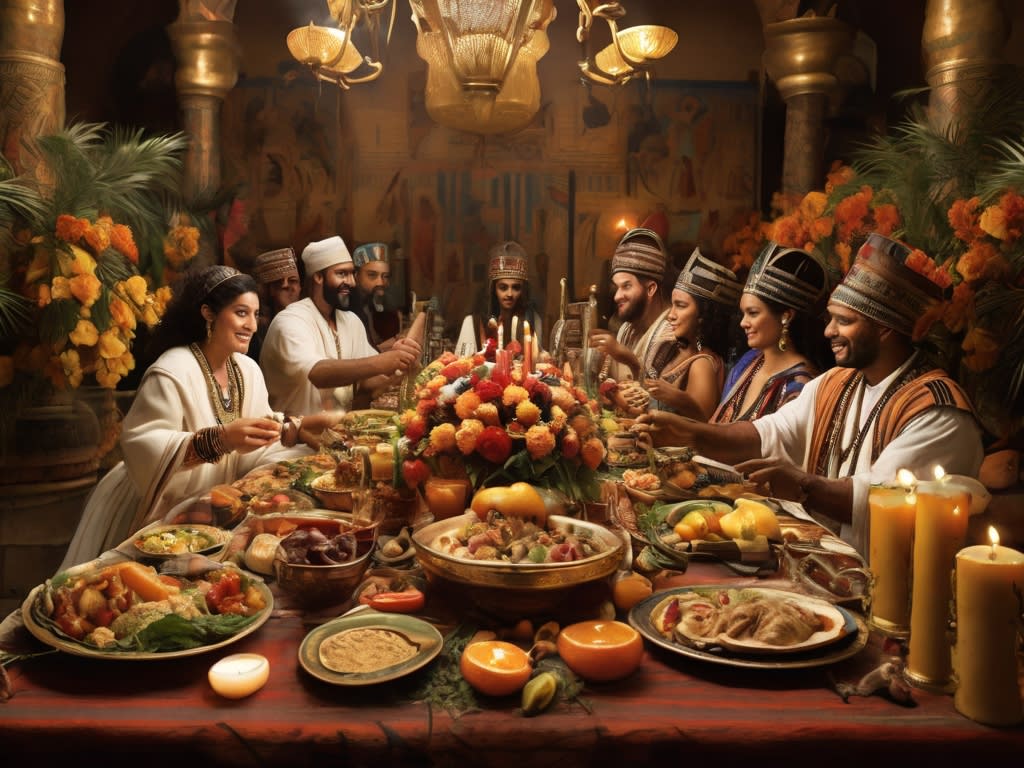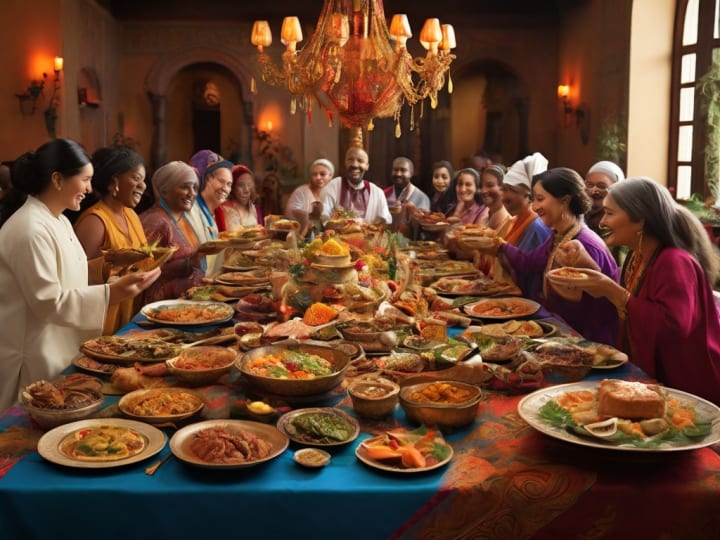Feast or Famine: Understanding the History of Feasting
Feasting Through Time: A Journey Into the Evolution and Significance of Shared Meals

Feasting is a cultural practice that has been a part of human history for millennia. From ancient civilizations to modern societies, the act of coming together to share food and celebrate has played a significant role in shaping our social structures, traditions, and even our evolution. In this article, we will delve into the history of feasting, exploring its origins, evolution, and cultural significance
Origins of Feasting
The practice of feasting can be traced back to the earliest human societies. For early hunter-gatherer communities, food was often scarce, and the ability to share resources was crucial for survival. Feasting served as a way to strengthen social bonds and redistribute food among group members, ensuring that everyone had enough to eat.
As societies began to settle and agriculture developed, feasting took on new meanings and significance. In many ancient civilizations, such as the Egyptians, Greeks, and Romans, feasting was closely tied to religious rituals and ceremonies. These feasts were often elaborate affairs, featuring lavish meals, music, dancing, and other forms of entertainment.
Feasting in Medieval Europe
In medieval Europe, feasting was a central part of courtly life and chivalric culture. Feasts were hosted by kings, nobles, and other wealthy individuals as a way to demonstrate power and prestige. These feasts were often extravagant affairs, with elaborate dishes, fine wines, and entertainment provided for guests.
Feasting in medieval Europe was not just about indulgence; it was also a way to reinforce social hierarchies and maintain the status quo. The seating arrangements at a feast, for example, were carefully orchestrated to reflect the social rank of the guests, with the most important individuals seated closest to the host.
The Renaissance and the Age of Exploration
During the Renaissance and the Age of Exploration, feasting underwent further transformation. As European explorers traveled to distant lands, they encountered new foods, flavors, and culinary traditions. These exotic ingredients were eagerly incorporated into the feasts of the wealthy elite, leading to the development of new culinary techniques and dishes.
Feasting during this period also became more refined and sophisticated, with an emphasis on elegance and presentation. Banquets were often held in grand halls adorned with elaborate decorations, and the art of fine dining became a mark of culture and sophistication.
Feasting in the Modern Era
In the modern era, feasting has taken on new forms and meanings. While traditional feasting rituals still exist in many cultures, modern technology and globalization have transformed the way we eat and celebrate. Today, feasting can take place virtually, with people from around the world coming together to share food and culture online.
Despite these changes, the underlying principles of feasting remain the same. Whether it's a simple meal shared among friends or a lavish banquet hosted by a world leader, feasting continues to serve as a way to connect with others, celebrate life's milestones, and honor our shared humanity.
The Cultural Significance of Feasting
Feasting is more than just a way to satisfy hunger; it is a deeply ingrained cultural practice that reflects the values, beliefs, and social dynamics of a society. In many cultures, feasting is not just about the food; it is also about the act of coming together as a community to celebrate, mourn, or commemorate important events.
In many indigenous cultures, feasting is a sacred ritual that is deeply intertwined with spiritual beliefs and traditions. For example, among the Maasai people of East Africa, meat is considered a symbol of wealth and status, and feasting is often used to mark important life events such as births, marriages, and deaths.
Similarly, in many Asian cultures, such as China and Japan, feasting is an integral part of religious and cultural festivals. These feasts often involve elaborate rituals and ceremonies, and are seen as a way to honor ancestors, deities, and the natural world.

Feasting and Identity
Feasting also plays a crucial role in shaping individual and group identities. The foods we eat, the way we prepare them, and the rituals surrounding their consumption can all contribute to a sense of belonging and cultural identity.
For example, in the United States, Thanksgiving is a holiday that is deeply rooted in feasting traditions. The meal typically includes turkey, stuffing, cranberry sauce, and pumpkin pie, and is often accompanied by rituals such as sharing what you're thankful for and watching parades or football games. For many Americans, Thanksgiving is not just a day to eat good food; it is a day to connect with family, reflect on the past year, and celebrate the American spirit.
Feasting in the Digital Age
In recent years, the rise of social media and digital technology has transformed the way we experience and participate in feasting. Platforms like Instagram and Pinterest have made it easier than ever to share photos of food and recipes, and to connect with others who share our culinary interests.
At the same time, the COVID-19 pandemic has forced many of us to rethink the way we feast and celebrate. With social distancing measures in place, traditional feasting practices such as large family gatherings and communal meals have become more challenging. However, many people have found creative ways to adapt, using video calls and virtual events to share food and celebrate together, albeit from a distance.
Looking to the Future
As we look to the future, it is clear that feasting will continue to evolve and adapt to reflect the changing needs and values of society. Whether it's a simple meal shared among friends, a lavish banquet hosted by a world leader, or a virtual feast shared online, the act of coming together to share food and celebrate is a timeless tradition that will continue to enrich our lives for generations to come.
Conclusion
Feasting is a timeless tradition that has played a central role in human culture and society for thousands of years. From its origins in early hunter-gatherer communities to its modern-day manifestations, feasting has evolved and adapted to reflect the changing needs and values of society.
By understanding the history of feasting, we can gain insight into the ways in which food, culture, and society intersect. Whether we're sharing a meal with family, attending a wedding banquet, or participating in a cultural festival, feasting continues to enrich our lives and connect us to our shared human heritage.
Dear Readers 💙
If you enjoyed this article on the history of feasting and found it informative, please give it a round of applause or a like! Don't forget to follow the author for more insightful content and subscribe to our newsletter to stay updated on our latest articles and news. Your support means a lot to us, and we look forward to sharing more exciting content with you in the future!
About the Creator
BLESSING COOL
Digital Network Marketer || Crypto Enthusiat || Social Media Influncer || Skilled Serial Entrepreneur || Investor || Motivational Speaker || News Reporter.






Comments
There are no comments for this story
Be the first to respond and start the conversation.